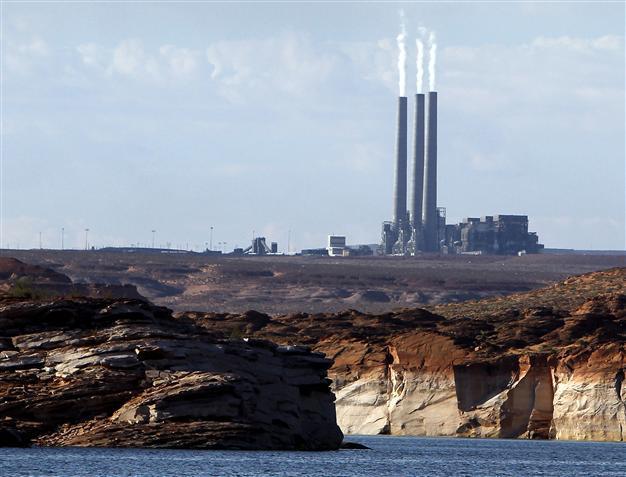Carbon plan still leaves US short of UN pledge: study
BONN - Agence France-Presse

AP Photo
President Barack Obama's plan to cut the carbon emissions of US power plants by up to 30 percent will leave America far short of its current pledges at UN climate talks, a study said Wednesday.
The United States promised in 2010 to reduce greenhouse gases by 17 percent by 2020 from 2005 levels.
It has also set a 2050 target to further curb emissions by 83 percent compared to the 2005 benchmark.
However, specialists in Germany said in an analysis coinciding with a new round of UN climate negotiations in Bonn that Obama's plan would only reduce 2030 US national emissions to about 10 percent below 2005 levels.
"While the proposal is welcome, it is insufficient to meet the US's pledges of 17 percent reduction of all greenhouse gas emissions by 2020 and is inconsistent with its long-term target of 83 percent below 2005 level by 2050," said Niklas Hoehne of Ecofys, a German group that helped analyse the plan's impact.
The review, called the Climate Action Tracker, is updated regularly to measure whether national pledges at the long-troubled UN talks are closing in on the goal of limiting warming to two degrees Celsius (3.6 degrees Fahrenheit).
It warned on Wednesday that the world "is still tracking" towards 3.0-4.6 C warming by 2100, a scenario that many scientists said could be disastrous.
Obama's proposal, called the Clean Power Plan, seeks to curb national emissions from electricity plants by a national average of 30 percent by 2030, again compared to 2005 levels.
Power plants account for about 40 percent of carbon emission by the United States, the biggest greenhouse-gas polluter after China.
But the Climate Action Tracker said the plan "is slower than the US's recent rate of decarbonisation over the last decade."
"The plan implies an economy-wide decarbonisation rate of about 0.9 percent per annum, significantly lower than the 1.4 percent per annum achieved in the last decade. This is not as fast as required for a 2 C decarbonisation pathway."
The power sector urgently needs to slash its emissions, but much of the likely reduction will be offset by increases in carbon from transport, industry and agriculture, Bill Hare of Climate Analytics told AFP.
The assessment said the United States' 2030 national emissions would be about five percent higher than 1990 levels -- the benchmark commonly used at the UN talks.
The European Union (EU) says it is on track to exceed its own target of reducing emissions by 20 percent by 2020 from 1990 levels.
The Bonn talks are the next step in a laborious process to conclude a global pact on curbing greenhouse gases by 2015, to enter into force from 2020.
The talks have been troubled by bickering over which countries should shoulder the burden of reducing emissions to safer levels.
The Climate Action Tracker said global greenhouse gas emissions will have to reach zero somewhere between 2060 and 2080 to meet the 2 C target -- even sooner for the energy and industry sectors.
